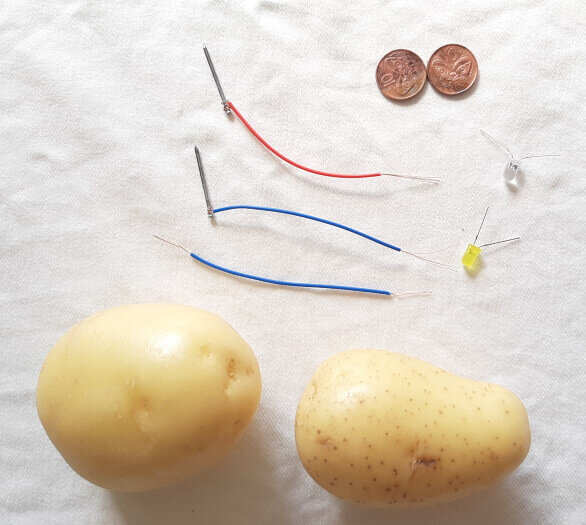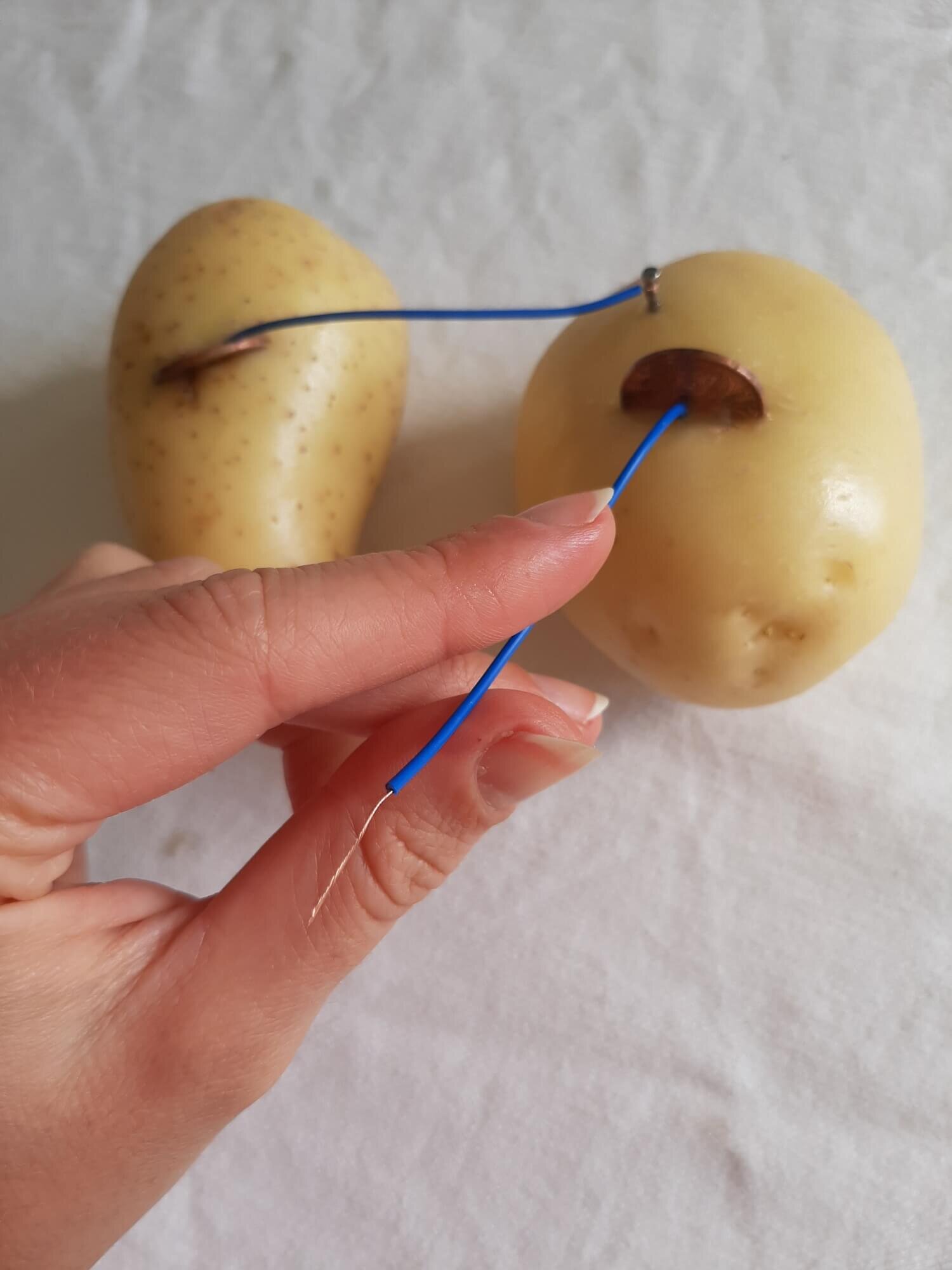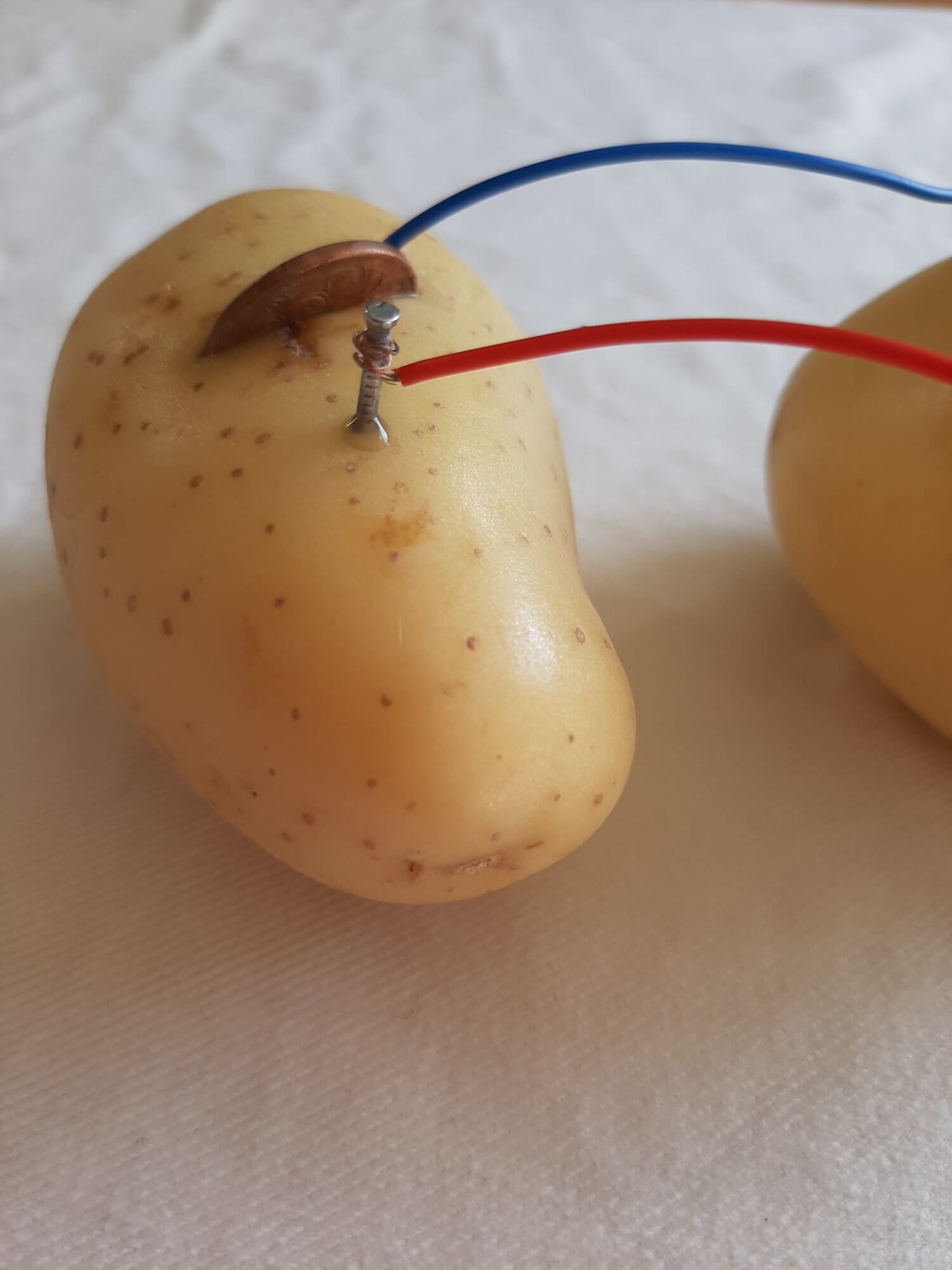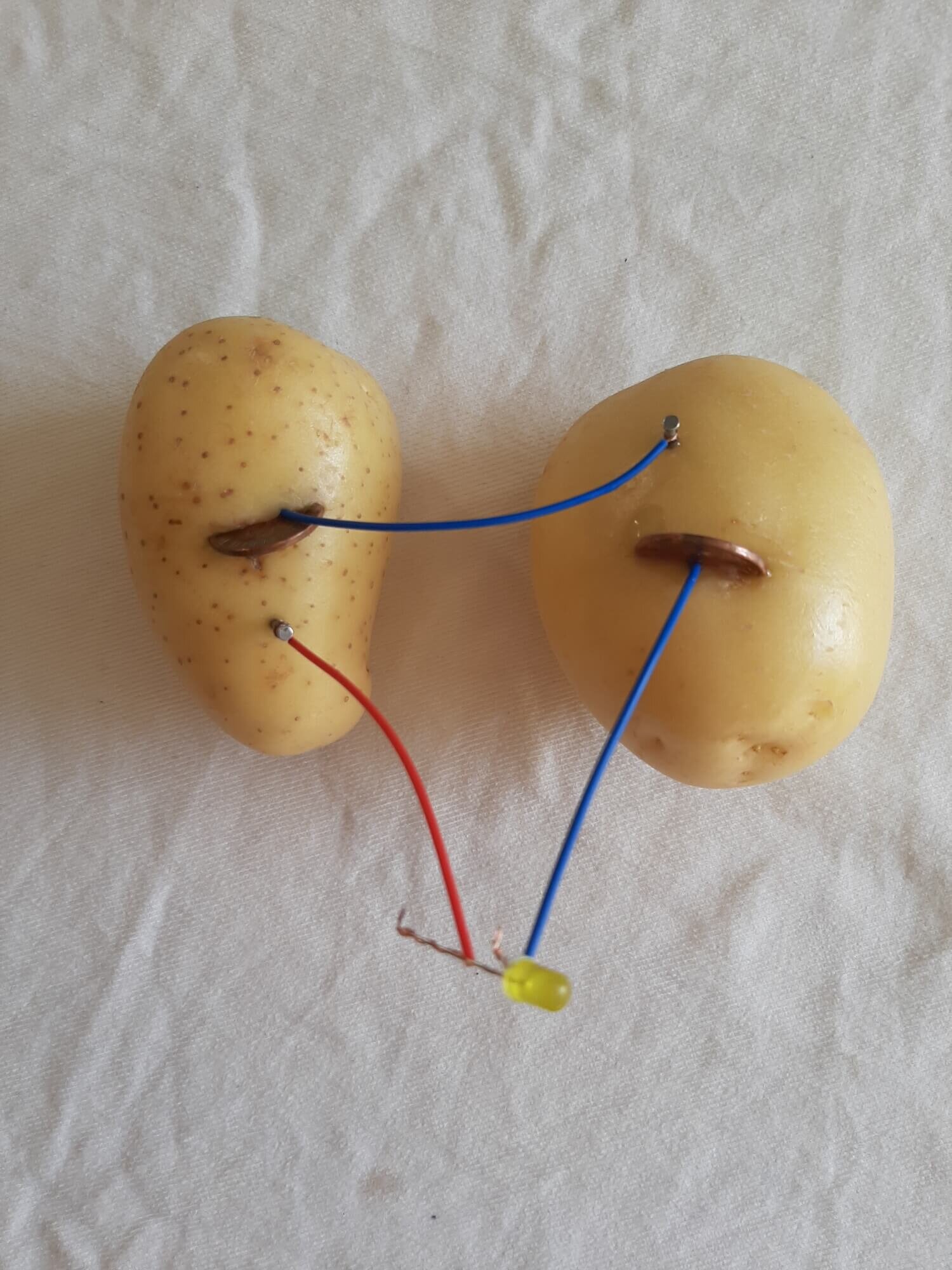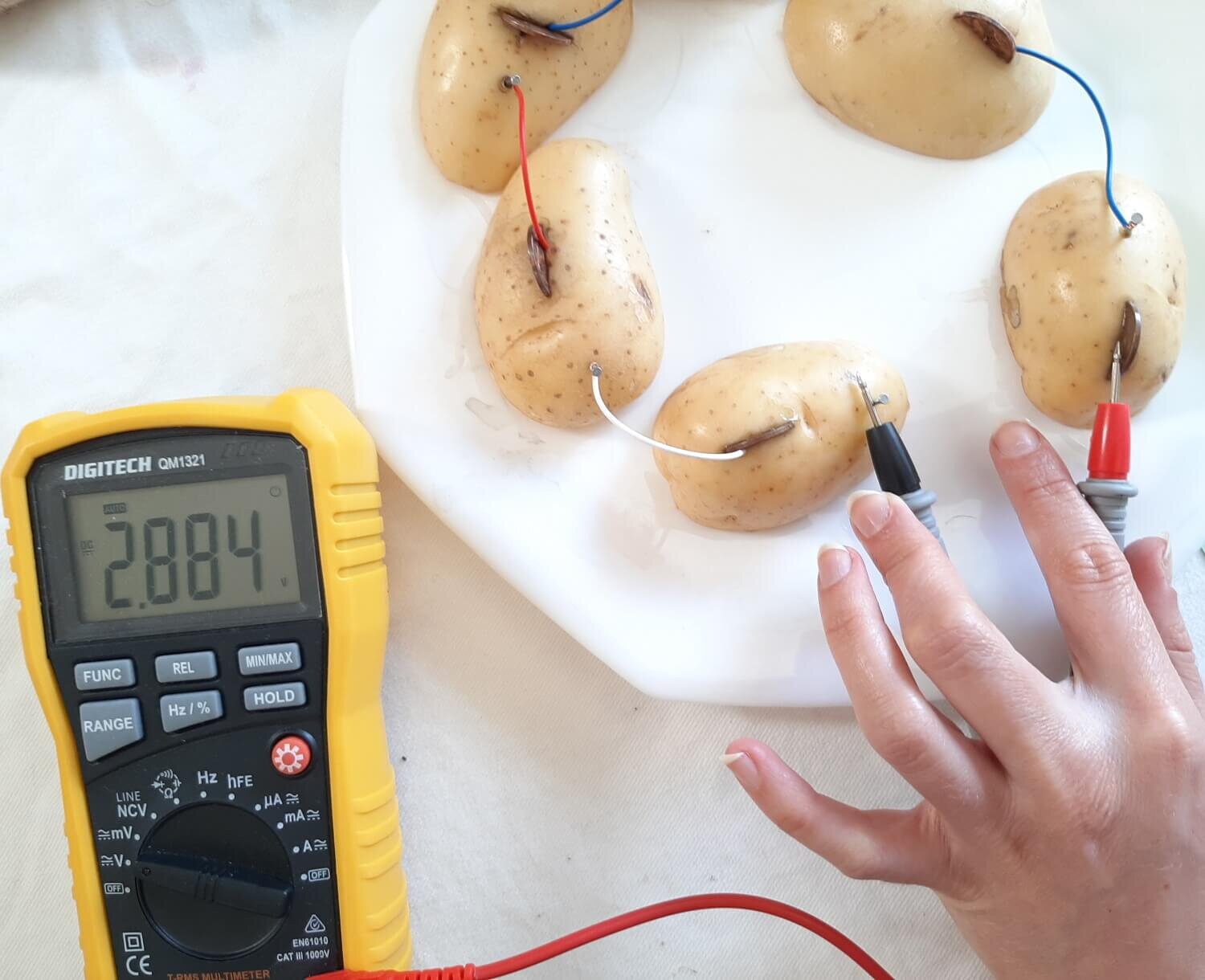Potato Powered Light Experiment
Put together a potato powered light and learn about the spud-tacular science behind it
Caution: We worked with a very low voltage, and so didn’t use alligator clips, but if you want to create more power then use alligator clips for your safety.
WARNING: Don’t do this experiment near open flames or strong heat sources.
What you need:
3-4 potatoes
Two pennies/coins
Two zinc-plated nails
Three pieces of copper wire
Small light bulb or LED light
What to do:
Start with two potatoes to see if they can light a LED light. If not, then experimentation is the key; add more spuds, halve them, and even quarter them!
Insert a coin and the end of one piece of copper wire into the potato so that they are pressed together inside the spud
Wrap the loose end of the wire around one of the nails and insert it into the other potato
Push a nail into the potato with the coin in it and wrap the end of a piece of wire around the top of the nail
Insert a coin and the end of one piece of copper wire into the potato that has no coin in it
Connect the two loose ends of the wires to the LED light and watch it light up!
No Glow?
If the light doesn’t turn on, try turning the light around the other way as LEDS are polarized. If it still doesn’t work then try a different light.
If it STILL doesn’t light up you may not have enough voltage (we didn’t), cut the potatoes in half and add in more coins and nails to make the circuit bigger. We needed six potato halves to light up our LED light. How many did you need? Did you try quartering them? What happened?
Guess what!? We measured the voltage running through the circuit with our multimeter and found that four half potatoes have a higher voltage than two whole potatoes.
How it works:
Two key elements of this experiment are the copper on the outside of the penny and the zinc on the outside of the galvanized nail
There is chemical energy between the two metals; the zinc is more reactive than the copper so it wants to take electrons from the copper.
The potato acts as an electrolyte which means it enables the electrons to flow through it.
When the nail and pennies are connected to a potato in a circuit, the chemical energy is converted to electrical energy which gives enough power to turn on a small light.

